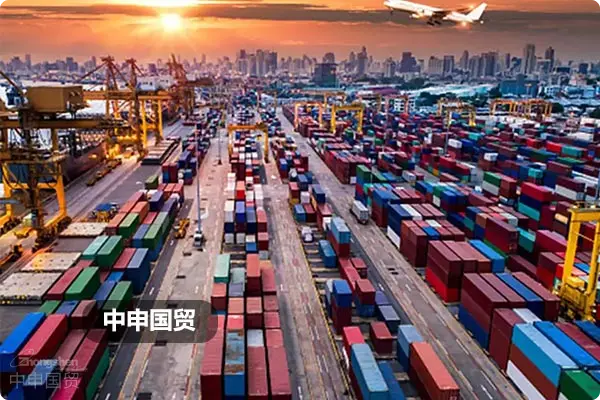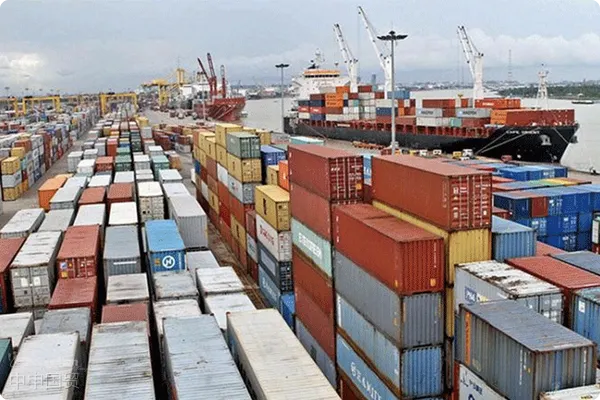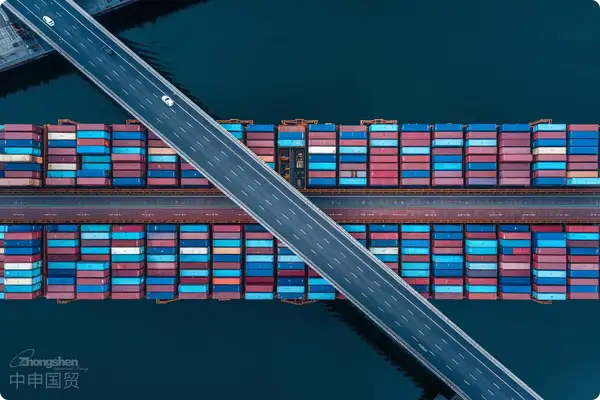- Shanghai Zhongshen International Trade Co., Ltd. - Two decades of trade agency expertise.
- Service Hotline: 139 1787 2118
When exporting to Thailand, are the tariffs really high? The tariff rates for different products vary greatly, from zero - tariff medical equipment to motorcycles with a tariff as high as 80%. A wrong classification may lead to profit losses! In this guide, we will deeply analyze Thailands tariff policies and teach you how to enhance your export competitiveness through correct tax calculations and strategies.

I. Overview of Thailands Tariff System
(I) Detailed Explanation of the Six - level Tariff System
Thailand currently adoptsa six - level tariff system, which levies taxes step - by - step according to the value - added part of the products. The details are as follows:
- Zero Tariff: Applicable to most industrial raw materials and necessities, such as medical equipment. This measure helps to reduce the production costs of related industries and promote the development of key fields such as healthcare.
- 1% Tariff: For some selected raw materials, electronic spare parts and means of transportation for international transportation. The low tariff is conducive to attracting investment in related industries and enhancing the competitiveness of Thailands electronics industry.
- 5% Tariff: Applicable to primary products and capital goods. An appropriate tariff not only protects domestic industries but also does not impose too heavy a burden on industrial development.
- 10% Tariff: For intermediate products. This tax rate helps to balance the development of domestic industries and international market demand, and encourages local processing and value - addition.
- 20% Tariff: Levied on finished products, aiming to protect the domestic manufacturing industry and encourage enterprises to improve product quality and market competitiveness.
- 30% and Above Tariff: For products that need special protection. However, there are still many products with tariffs exceeding 30%, such as motorcycles (over 80%), rice (52%), and dairy products (216%). These high - tariff products are usually strategic or key - protected industries in Thailand.
(II) Tariff Rate Range
The tariff rate range in Thailand varies from 0% to 80% :
- 0% Tariff:Duty - free Products: Thailand implements a duty - free policy for some products, mainly including:
- Medical Equipment: Such as diagnostic and treatment equipment, to promote the development of the medical industry.
- Educational Supplies: Such as teaching instruments and teaching materials, to support the education cause.
- Certain Industrial Raw Materials: Raw materials used for producing export products can be exempted from import tariffs, reducing production costs.
- 1% - 5% Tariff:
- Selected Raw Materials and Components: Such as some electronic components, chemicals, etc.
- International Means of Transportation: Ships, aircraft, etc. used for international shipping.
- 5% - 10% Tariff:Primary products and capital goods: Such as basic metals, mineral products, and some chemical products.
- 10% - 20% Tariff:
- Intermediate products and semi - finished products: Such as plastic products, textiles, rubber products, and mechanical equipment.
- Some electronic products: Such as household appliances, computer accessories, etc.
- 20% - 30% Tariff:
- Finished products and consumer goods: Such as clothing, furniture, and auto parts.
- Mid - range consumer goods: Including some high - end electronic products,Cosmetics & Personal Care,Daily necessities.
- 30% - 80% Tariff:High - tariff goods
- Import of automobiles and complete vehicles: The tariff is generally 80%, aiming to protect the domestic automotive industry.
- Motorcycles: The tariff exceeds 80%.
- Alcoholic beverages and tobacco: High tariffs and consumption taxes are levied to regulate consumption.
- Agricultural products: Such as rice (tariff 52%), sugar products, etc., to protect domestic agriculture.
- Dairy products: The tariff on some dairy products is as high as 216%, to protect the domestic dairy industry.
II. Tariff Policies for Chinas Exports to Thailand
(I) Tariff Rates for Different Products
The tariff rates of goods exported from China to Thailand vary according to the type of goods:
- Raw materials(Tariff rate 10%-15%): For example, specific chemical raw materials.
- Semi - finished products(Tariff rate 15%-40%): Such as mechanical parts processed to a certain extent but not yet finished.
- Finished products(Tariff rate 30%-60%): Finished high - end electronic products may face higher tariffs.
- Commercial advertisements(Tariff rate 40%): Advertising materials with commercial value.
(II) Tariff Calculation Methods
The Thai customs adopts three methods of calculating tariffs:
- Ad valorem duty rate: Calculate the tariff based on the value of the goods. For example, if the value of the goods is $100,000 and the applicable ad valorem duty rate is 15%, the tariff is $15,000.
- The higher of the specific duty rate or the ad valorem duty rate: For some goods, both a specific duty rate and an ad valorem duty rate are specified, and the higher rate is selected for collection.
- Specific duty rate: Calculate the tariff based on the Weight, volume or quantity Calculate tariffs. Applicable to bulk commodities such as coal and ore.
(III) Tariff Preference Policies
Chinas exports to Thailand can enjoy multiple tariff preferences:
Free Trade Agreement (FTA) preferences:
- China - ASEAN Free Trade Agreement (CAFTA):
Tariff concessions: According to the agreement, the tariffs of most goods are gradually reduced to zero.
Beneficiary goods: Agricultural products, mechanical equipment, electronic products, textiles, etc. - Other agreements: Thailand has also signed bilateral or multilateral free trade agreements with countries such as Japan, South Korea, Australia, New Zealand, and India, involving tariff reductions.
Special economic zones and investment promotion policies:
- Policies of the Board of Investment of Thailand (BOI):
Import tariff reduction and exemption: For eligible investment projects, imported mechanical equipment and raw materials can enjoy tariff exemption or reduction.
Tax incentives: Including corporate income tax reduction, value - added tax reduction, etc. - Eastern Economic Corridor (EEC): In the designated area, more preferential tax and tariff policies are provided to attract investments in high - tech and innovative industries.
Tariff reduction plan:
- Tax - free and tax - refund system:
- Bonded area: Raw materials and components imported by enterprises in the bonded area can be exempted from tariffs for processing and export.
- Tax - refund system: Enterprises that import raw materials for the production of export products can apply for tariff refund.
Preferential policies to promote specific industries:
- New energyAutomobile: To promote the development of the new energy vehicle industry, Thailand reduces or exempts tariffs on imported electric vehicles and components to encourage the development of the domestic market.
- High - tech products: For high - tech products that meet Thailands industrial upgrading needs, tariff preferences are provided to attract advanced technologies and equipment to enter Thailand.
Tariff preferences for agricultural products:
- Tropical fruits: Under the China - ASEAN Free Trade Agreement, the tariffs on tropical fruits such as durians, mangosteens, and longans exported by Thailand are reduced or exempted, promoting bilateral trade.
- Specific cases:Fruit imports: Since 2018, the tariffs on durians, lychees, pitayas, etc. imported by Thailand from ASEAN countries have been reduced from 15% - 30% to Zero Tariff, enriching the domestic market supply.
Other preferential measures:
- Tariff quota system: For some sensitive goods, Thailand implements a tariff quota. Imports within the quota enjoy a lower tariff, and those exceeding the quota are subject to a higher tariff.
- Most - Favored - Nation Treatment: According to the rules of the World Trade Organization (WTO), most - favored - nation tariff treatment is provided to all member states, applying the same tariff rate to avoid discriminatory tariffs.
III. Overview of Taxes and Fees for Exports to Thailand
(I) Value - added Tax and Other Taxes and Fees
In addition to tariffs, exports to Thailand also involve the following taxes and fees:
- Value - Added Tax (VAT):Standard rate: 7%Export goods: The value - added tax rate is 0%, without increasing the additional costs of enterprises.
- Consumption Tax: Mainly applicable to Tobacco and Alcohol Products, which can be levied ad valorem or by quantity.
- Domestic Tax: For goods subject to consumption tax, an additional 10% consumption tax is levied..
- Surtax: For certain specific goods (such as food), it can be levied ad valorem or by quantity.
(II) Basis for Tax and Fee Calculation
Calculation Basis: All import duties and taxes are calculated based on the freight value (CIF). Value - added Tax Calculation Formula
: Value - added Tax = Value - added Tax rate of 7%×(CIF price + applicable customs duty)Note
- : For goods exported to Thailand, the value - added tax rate is, so export enterprises do not need to bear additional costs for value - added tax. 0%Consumption Tax and Domestic Tax
: Based on the market value or quantity of the goods.:
- Consumption Tax: On the basis of the CIF price plus the applicable customs duty, an additional 10% consumption tax is levied.
- Domestic TaxAccording to the specific situation of the goods, it is levied ad valorem or by quantity.
Surtax:
- In Thailand, some goods need to pay customs duties when
IV. Relationship between Products Exported to Thailand and Tariffs
(I) Which Products Need to Pay Tariffs
, involving a total ofCustoms Declaration9 categories of products Rice and Glutinous Rice:
- : Paddy, white rice, glutinous rice and other forms of rice products.Metal Scrap
- : Scrap copper, scrap aluminum, scrap iron, scrap steel and other metal scraps and debris.Cattle Skins
- : Unprocessed raw cowhide, calfskin, buffalo hide, etc.Natural Rubber
- : Raw rubber, smoked sheets, concentrated latex and other forms of natural rubber.Timber, Sawn Timber and Wood Products
- : Logs, sawn timber, wood chips, charcoal, wooden handicrafts, etc.Tin and Its Products:
- Unprocessed tin ore, tin ingots, tin powder, etc.Fish Meal:
- Fish meal, fish bone meal, etc. used for feed or fertilizer.Silkworm Cocoons and Raw Silk
- Unprocessed silkworm cocoons, raw silk, etc.Crude Oil and Petroleum Products:
- Crude oil, heavy oil, fuel oil, lubricating oil, etc.Currently, there are
(II) Export - controlled Products
45 products subject to export control in Thailand, including products subject to export tax, mainly involving sensitive areas: Military Supplies
- Nuclear Materials
- Chemicals
- Control Measures
- High - tech products
Freight forwarder price comparison:
- License System: Export - controlled products need to apply Export License. Enterprises need to submit applications, providing product information, purpose description, export destination, etc.
- Import Quota Restrictions: For some sensitive products, import quotas are implemented to limit the import quantity within a certain period.
- Technical Barriers to Trade: Strict requirements are put forward for product technical specifications, certifications, inspections, etc. Enterprises need to meet these requirements to ensure the smooth entry of products into the Thai market.
- Anti - dumping Measures: If the export product price is lower than the normal value or causes damage to the Thai domestic industry, measures such as anti - dumping duties may be taken to protect the domestic industry.
V. Suggestions and Strategies
- Gain In - depth Understanding of Tariff Policies: Enterprises should closely monitor changes in Thai tariff rates and understand the specific tax rates and preferential policies for the goods involved.
- Utilize Free Trade Agreements: Make full use of China - ASEAN Free Trade Agreement, apply forIt is recommended to verify through the following methods:certificate, and enjoy tariff reduction.
- Operate in Compliance: For export - controlled products, strictly abide by Thailands export license system to ensure compliance.
- Contract: Accurately calculate various taxes and fees, price reasonably, and ensure the competitiveness of products in the Thai market.
- Market Research: Understand the Thai market demand, pay attention to protected high - tariff goods, and assess the feasibility of entering these markets.
VI. Conclusion
Thailands tariff system not only reflects the protection of domestic industries but also provides an open space for international trade. When Chinese enterprises export to Thailand, they should fully understand and utilize tariff policies, seize the opportunities brought by free trade agreements, ensure compliant operation, and improve market competitiveness.
Understanding tariff policies is the key! Master the latest Thai tariff system and preferential measures to ensure that your goods pass through customs at the lowest cost. Act now and consult usZhongShen International Tradeto escort your export business!
Related Recommendations
Learn
Contact Us
Email: service@sh-zhongshen.com
Related Recommendations
Contact via WeChat

? 2025. All Rights Reserved. Shanghai ICP No. 2023007705-2  PSB Record: Shanghai No.31011502009912
PSB Record: Shanghai No.31011502009912








